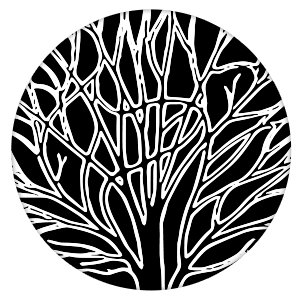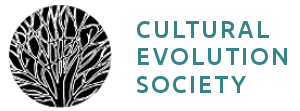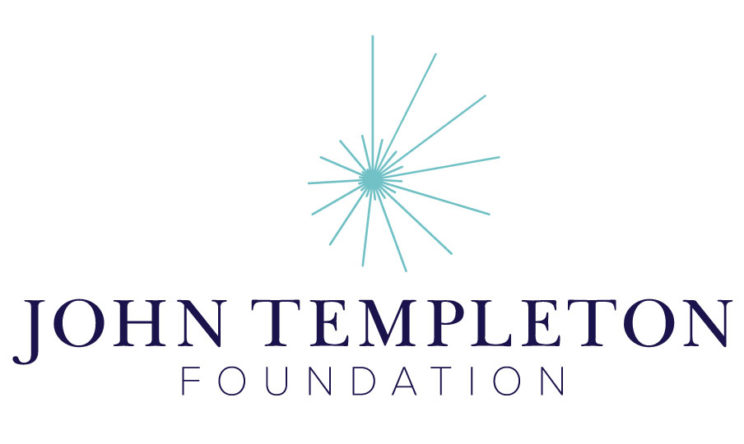Models of Social Dynamics
Readings
Readings for the module are listed by lecture.
Unit 1
Smaldino PE (2017) Models are stupid, and we need more of them. In R Vallacher, SJ Read, & A Nowak (Eds.), Computational social psychology (pp. 311Ð331). New York: Psychology Press. http://smaldino.com/wp/wp-content/uploads/2018/01/Smaldino2017-ModelsAreStupid.pdf
Kauffman, S. A. (1971). Articulation of parts explanation in biology and the rational search for them. In R. C. Buck & R. S. Cohen (Eds.), PSA 1970 (pp. 257Ð72). Irvine, CA. https://link.springer.com/chapter/10.1007/978-94-010-1829-6_11
Weisberg M (2007) Who is a modeler? British Journal for the Philosophy of Science 58: 207-233. https://www.jstor.org/stable/30115224
NetLogo: https://ccl.northwestern.edu/netlogo/
NetLogo User's Manual: https://ccl.northwestern.edu/netlogo/docs/
Unit 2
Barnett GA (2011) Mathematical models of the diffusion process. In The diffusion of innovations: A communication science perspective, pp 103-122. New York: Peter Lang Publishing. https://www.peterlang.com/view/title/21535
Bass FM (1969) A new product growth for model consumer durables. Management Science 15: 215-227. https://www.jstor.org/stable/2628128
FURTHER DIRECTIONS
Transmission biases
Laland KN (2004) Social learning strategies. Learning & Behavior 32: 4-14. https://link.springer.com/article/10.3758/BF03196002
Kendal RL et al. (2018) Social learning strategies: Bridge-building between fields. Trends in Cognitive Sciences 22: 651-665. https://doi.org/10.1016/j.tics.2018.04.003
Smaldino PE, Aplin LM, Farine DR. (2018) Sigmoidal acquisition curves are good indicators of conformist transmission. Scientific Reports 8: 14015. https://www.nature.com/articles/s41598-018-30248-5
Complex contagion.
Centola D, Macy M (2007) Complex contagions and the weakness of long ties. American Journal of Sociology 113: 702-734. https://www.jstor.org/stable/10.1086/521848
Emotion contagion
Hill AL, Rand DG, Nowak MA, Christakis, NA (2010) Emotions as infectious diseases in a large social network: The SISa model. Proceedings of the Royal Society B 277: 3827Ð3835. https://doi.org/10.1098/rspb.2010.1217
Ingroup-bias and adoption
Smaldino PE, Janssen MA, Hillis V, Bednar J. (2017) Adoption as a social marker: Innovation diffusion with outgroup aversion. Journal of Mathematical Sociology 41: 26-45. https://doi.org/10.1080/0022250X.2016.1250083
Unit 3
Deffuant, G., Neau, D., Amblard, F., & Weisbuch, G. (2000). Mixing beliefs among interacting agents. Advances in Complex Systems, 3, 87-98. https://doi.org/10.1142/S0219525900000078
Flache A, et al. (2017) Models of social influence: Towards the next frontiers. Journal of Artificial Societies and Social Simulation 20(4): 2. http://jasss.soc.surrey.ac.uk/20/4/2.html
FURTHER DIRECTIONS
Differentiation from similar individuals
Smaldino PE, Epstein JM (2015) Social conformity despite individual preferences for distinctiveness. Royal Society Open Science 2: 140437. https://doi.org/10.1098/rsos.140437
Weisbuch G (2015) From anti-conformism to extremism. Journal of Artificial Societies and Social Simulation 18(3): 1. http://jasss.soc.surrey.ac.uk/18/3/1.html
Touboul J (2019) The hipster effect: When anti-conformists all look the same. Discrete & Continuous Dynamical Systems B 24: 4379Ð4415. http://dx.doi.org/10.3934/dcdsb.2019124
Multiple interacting opinions.
Axelrod R (1997) The dissemination of culture: A model with local convergence and global polarization. Journal of Conflict Resolution 41: 203-226. https://doi.org/10.1177%2F0022002797041002001
Mark NP (2003) Culture and competition: Homophily and distancing explanations for cultural niches. American Sociological Review 68: 319-345. https://www.jstor.org/stable/1519727
Battiston F, Nicosia V, Latora V, San Miguel M (2017) Layered social influence promotes multiculturality in the Axelrod model. Scientific Reports 7: 1809. https://www.nature.com/articles/s41598-017-02040-4
Network structure.
Flache, A., & Macy, M. W. (2011). Small worlds and cultural polarization. Journal of Mathematical Sociology, 35(1-3), 146-176. https://doi.org/10.1080/0022250X.2010.532261
Turner, M. A., & Smaldino, P. E. (2018). Paths to polarization: How extreme views, miscommunication, and random chance drive opinion dynamics. Complexity 2018: 2740959. https://doi.org/10.1155/2018/2740959
Scientific beliefs.
Akerlof GA, Michaillat P (2019) Persistence of false paradigms in low-power sciences. Proceedings of the National Academy of Sciences 115: 13228-13233. https://doi.org/10.1073/pnas.1816454115
Weatherall JO, O'Connor C (2019) Conformity in scientific networks. arXiv: 1803.09905v4. https://arxiv.org/abs/1803.09905v4
Unit 4
Axelrod R, Hamilton WD (1981) The evolution of cooperation. Science 211: 1390-1396. https://doi.org/10.1126/science.7466396
Nowak MA (2006) Five rules for the evolution of cooperation. Science 314: 1560-1563. https://doi.org/10.1126/science.1133755
Cronk L (2015) Human cooperation: Evolutionary approaches to a complex phenomenon. Handbook on evolution and society: Toward an evolutionary social science, 441-459. http://www.humangenerosity.org/wp-content/uploads/2015/02/Human-Cooperation.pdf
FURTHER DIRECTIONS
Diving deeper
Trivers RL (1971) The evolution of reciprocal altruism. The Quarterly Review of Biology 46: 35-57. https://doi.org/10.1086/406755
Axelrod R (1997) The complexity of cooperation: Agent-based models of competition and collaboration. Princeton University Press. https://press.princeton.edu/books/paperback/9780691015675/the-complexity-of-cooperation
Nowak MA, Sigmund K (2005) Evolution of indirect reciprocity. Nature 437: 1291Ð1298. https://www.nature.com/articles/nature04131
Smaldino PE, Schank JC, McElreath R (2013) Increased costs of cooperation help cooperators in the long run. American Naturalist 181: 451Ð463. https://doi.org/10.1086/669615
Cooperation in larger groups
Simon HA (1990) A mechanism for social selection and successful altruism. Science 250: 1665Ð1668. https://doi.org/10.1126/science.2270480
Boyd R, Richerson PJ (1992) Punishment allows the evolution of cooperation (or anything else) in sizable groups. Ethology and Sociobiology 13: 171Ð195. https://doi.org/10.1016/0162-3095(92)90032-Y
Henrich J, Boyd R (2001) Why people punish defectors: Weak conformist transmission can stabilize costly enforcement of norms in cooperative dilemmas. Journal of Theoretical Biology 208: 79-89. https://doi.org/10.1006/jtbi.2000.2202
Hooper PL, Kaplan HS, Boone JL (2010) A theory of leadership in human cooperative groups. Journal of Theoretical Biology 265: 633Ð646. https://doi.org/10.1016/j.jtbi.2010.05.034
Smaldino PE, Lubell M (2014) Institutions and cooperation in an ecology of games. Artificial Life 20: 207Ð221. https://doi.org/10.1162/ARTL_a_00126
Cooperation and competition
Hammond RA, Axelrod R (2006) The evolution of ethnocentrism. Journal of Conflict Resolution 50: 926Ð936. https://doi.org/10.1177%2F0022002706293470
Choi J-K, Bowles S (2007) The coevolution of parochial altruism and war. Science 318: 636. https://doi.org/10.1126/science.1144237
Makowsky MD, Smaldino PE (2016) The evolution of power and the divergence of cooperative norms. Journal of Economic Behavior & Organization 126: 75Ð88. https://doi.org/10.1016/j.jebo.2015.09.002
Waring TM, Goff SH, Smaldino PE (2017) The coevolution of economic institutions and sustainable consumption via cultural group selection. Ecological Economics 131: 524Ð532. https://doi.org/10.1016/j.ecolecon.2016.09.022
Unit 5
Boyd R, Richerson PJ (2002) Group beneficial norms can spread rapidly in a structured population. Journal of Theoretical Biology 215: 287Ð296. https://doi.org/10.1006/jtbi.2001.2515
Ehrlich PR, Levin SA (2005) The evolution of norms. PLOS Biology 3(6): e194. https://doi.org/10.1371/journal.pbio.0030194
FURTHER DIRECTIONS
Cultural group selection
Henrich J (2004) Cultural group selection, coevolutionary processes and large-scale cooperation. Journal of Economic Behavior and Organization 53: 3Ð35. https://doi.org/10.1016/S0167-2681(03)00094-5
Boyd R, Richerson PJ (2010) Transmission coupling mechanisms: Cultural group selection. Philosophical Transactions of the Royal Society B 365: 3787Ð3795. https://doi.org/10.1098/rstb.2010.0046
Richerson PJ et al. (2016) Cultural group selection plays an essential role in explaining human cooperation: A sketch of the evidence. Behavioral and Brain Sciences 39: e30. https://doi.org/10.1017/S0140525X1400106X
Signals and markers
Spence M (1973) Job market signaling. The Quarterly Journal of Economics 87: 355Ð374. https://doi.org/10.2307/1882010
McElreath R, Boyd R, Richerson PJ (2003) Shared norms and the evolution of ethnic markers. Current Anthropology 44: 122Ð130. https://doi.org/10.1086/345689
Noisy signals and intragroup variation
Smaldino PE, Flamson TJ, McElreath R (2018) The evolution of covert signaling. Scientific Reports 8: 4905. https://doi.org/10.1038/s41598-018-22926-1
Hoffman M, Hilbe C, Nowak MA (2018) The signal-burying game can explain why we obscure positive traits and good deeds. Nature Human Behaviour 2: 397Ð404. https://doi.org/10.1038/s41562-018-0354-z
Language and conventions
Cangelosi A, Parisi D (1998) The emergence of a 'language' in an evolving population of neural networks. Connection Science 10: 83Ð97. https://doi.org/10.1080/095400998116512
Puglisi A, Baronchelli A, Loreto V (2008) Cultural route to the emergence of linguistic categories. Proceedings of the National Academy of Sciences 105: 7936Ð7940. https://doi.org/10.1073/pnas.0802485105
Contreras Kallens PA, Dale R, Smaldino PE (2018) Cultural evolution of categorization. Cognitive Systems Research 52: 765Ð774. https://doi.org/10.1016/j.cogsys.2018.08.026
Unit 6
Wangersky PJ (1978) Lotka-Volterra population models. Annual Review of Ecology and Systematics 9(1): 189-218. https://doi.org/10.1146/annurev.es.09.110178.001201
Turchin P (2003) The metaethnic frontier theory. In Historical dynamics (pp 50Ð77). Princeton University Press. http://tuvalu.santafe.edu/files/gems/coevolutionV/collectivesolidarity.pdf
FURTHER DIRECTIONS
The evolution of contagion
Goodnight C, Rauch E, Sayama H, De Aguiar MAM, Baranger M, Bar-Yam Y (2008) Evolution in spatial predator-prey models and the 'prudent predator': The inadequacy of steady-state organism fitness and the concept of individual and group selection. Complexity 13(5): 23Ð44. https://doi.org/10.1002/cplx.20209
Getting more complicated with historical cycles
Turchin P, Currie TE, Turner EAL, Gavrilets S (2013) War, space, and the evolution of Old World complex societies. Proceedings of the National Academy of Sciences 110: 16384Ð16389. https://doi.org/10.1073/pnas.1308825110
Turchin P (2016) Ages of discord: A structural demographic analysis of American history. Beresta Books. https://peterturchin.com/ages-of-discord/
Growing artificial societies
Epstein JM, Axtell R (1996) Growing artificial societies. MIT Press. https://mitpress.mit.edu/books/growing-artificial-societies
Epstein JM (2006) Generative social science: Studies in agent-based computational modeling. Princeton University Press. https://press.princeton.edu/books/ebook/9781400842872/generative-social-science
Crabtree SA, Bocinsky RK, Hooper PL, Ryan SC (2017) How to make a polity (in the central Mesa Verde region). American Antiquity 82: 71Ð95. https://doi.org/10.1017/aaq.2016.18
Autocatalysis
Kondo S, Mura T (2010) Reaction-diffusion model as a framework for understanding biological pattern formation. Science 329: 1616Ð1620. https://doi.org/10.1126/science.1179047
Jones J (2010) Characteristics of pattern formation and evolution in approximations of Physarum transport networks. Artificial Life 16: 127Ð153. https://doi.org/10.1162/artl.2010.16.2.16202
Unit 7
Epstein JM (2008) Why model? Journal of Artificial Societies and Social Simulation 11(4): 12. http://jasss.soc.surrey.ac.uk/11/4/12.html.bak
Gunawardena J (2014) Models in biology: Accurate descriptions of our pathetic thinking. BMC Biology 12: 29. https://doi.org/10.1186/1741-7007-12-29
Smaldino P (2019) Better methods cannot make up for mediocre theory. Nature 575: 9. https://www.nature.com/articles/d41586-019-03350-5
This project was supported by Grant #61105 from the John Templeton Foundation to the University of Tennessee, Knoxville (PIs: S. Gavrilets and P. J. Richerson) with assistance from the Center for the Dynamics of Social Complexity and the National Institute for Mathematical and Biological Synthesis at the University of Tennessee, Knoxville.

The Cultural Evolution Society's Online Learning Tutorial Series is licensed under a Creative Commons Attribution-NonCommercial-ShareAlike 4.0 International License. For designers' contact information, click here.



